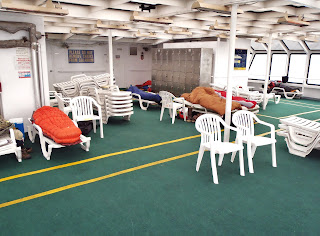 |
| Underway in the Inside Passage off British Columbia |
 |
| The M/V Columbia in Sitka |
 |
| Footbridge constructed from a single large log, in the Tongass National Forest near Sitka |
 |
| Lighthouse on the Inside Passage |
 | ||
| Governor's residence in Juneau (Russia not visible)
|
 |
| A rainy morning at Juneau's ferry terminal |
 |
| Our cabin's bunks and sitting area |
 |
| The cheap seats! |
 |
| The M/V COLUMBIA's dining room |
 |
| The M/V COLUMBIA's cafeteria |
 |
| Western Skunk Cabbage ("Swamp Lantern") blooms in the Tongass National Forest |
 |
| Creek Street in Ketchikan |
 |
| Tlingit totem pole in Ketchikan |
 |
| Underway in the Inside Passage off British Columbia |

No comments:
Post a Comment